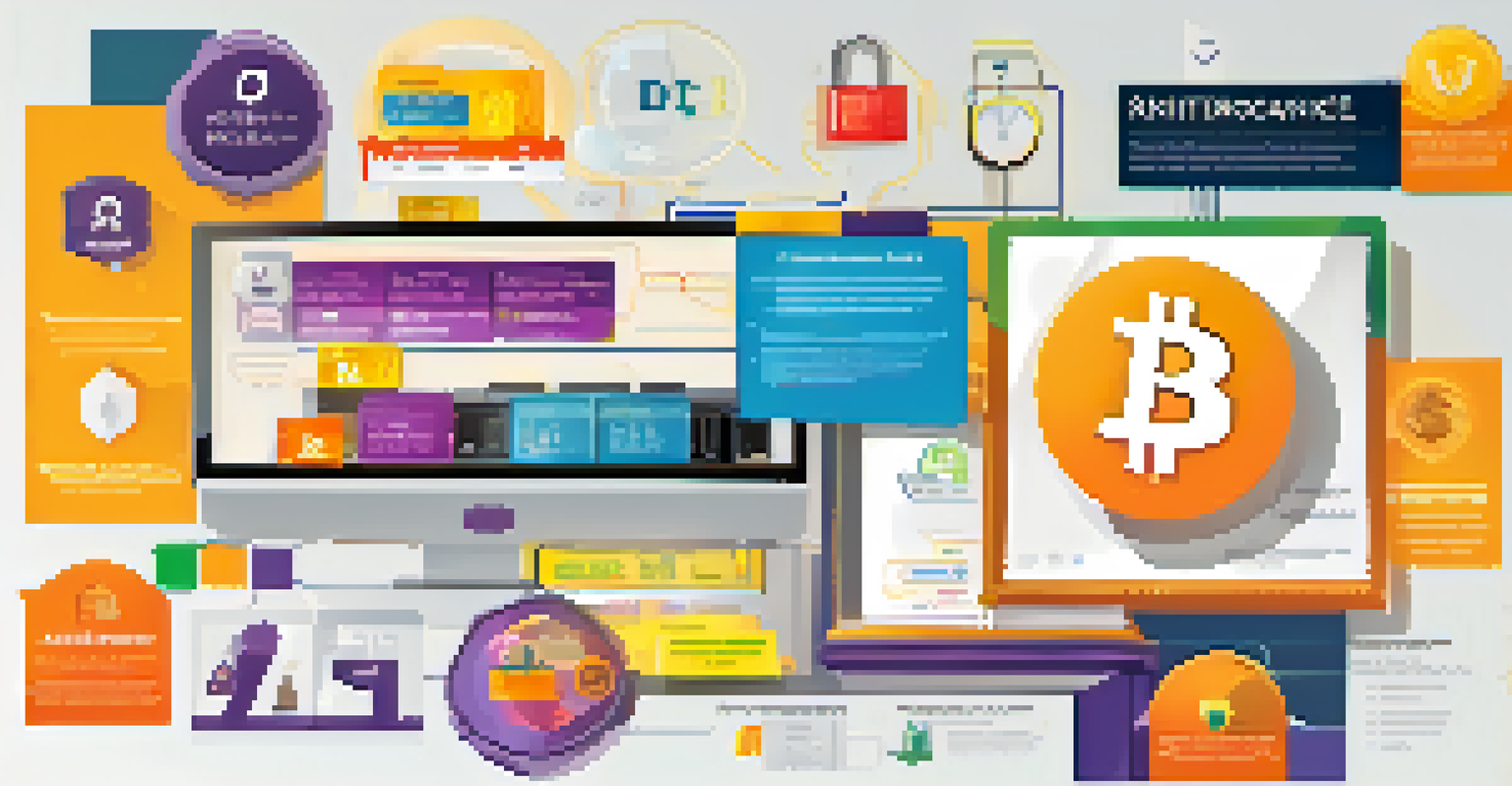Cost Comparison: Crypto vs Traditional Remittance Methods

Understanding Remittance: What It Means
Remittance refers to the transfer of money, often by a foreign worker to their family back home. It's a crucial lifeline for many, providing support in areas where economic opportunities are limited. Traditionally, these transfers have relied on banks and money transfer services.
The great thing about Bitcoin is that it empowers people to take control of their own money.
However, in recent years, cryptocurrencies like Bitcoin have emerged as an alternative. These digital currencies allow for peer-to-peer transactions without the need for intermediaries. This evolution raises the question: which method is more cost-effective?
By understanding the basic concept of remittance, we can better appreciate the potential savings and benefits that blockchain technology and cryptocurrencies might offer.
Traditional Remittance Methods: An Overview
Traditional remittance methods typically include banks, wire transfers, and services like Western Union. While these methods are reliable, they often come with high fees and unfavorable exchange rates. For instance, sending money internationally through a bank can incur costs that range anywhere from 5% to 10%.

Moreover, the time it takes for funds to arrive can vary significantly, sometimes taking several days. This delay can leave families in urgent need of funds waiting longer than necessary. Despite the drawbacks, many still opt for these established methods due to their familiarity and perceived security.
Remittance: A Vital Financial Lifeline
Remittance plays a crucial role in supporting families in economically challenged regions, often relying on traditional banks and emerging cryptocurrencies.
Understanding how traditional remittance works helps highlight the potential efficiencies that crypto can offer.
Cryptocurrency: A Game Changer in Remittance
Cryptocurrency has revolutionized the way we think about transferring money. By using blockchain technology, transactions can occur directly between users, bypassing banks and lowering fees. This decentralized approach means that sending money across borders can happen almost instantly and often at a fraction of the cost.
In the past, if you wanted to send money to someone, you had to go through a bank. Now, with cryptocurrencies, you can send money directly to anyone in the world, instantly and at a lower cost.
For example, sending Bitcoin can cost just a few dollars, regardless of the amount being transferred. This is a stark contrast to traditional methods that might charge hefty fees based on the transaction size. As more people become aware of the advantages, the adoption of crypto for remittance is likely to increase.
This shift raises important questions about the future of money transfers and the role of traditional methods in a rapidly changing financial landscape.
Cost Comparison: Fees and Charges Explained
When comparing costs, it's essential to consider both the upfront fees and the exchange rates. Traditional services often charge a flat fee plus a percentage of the amount being sent, which can add up quickly. On the other hand, crypto transactions may have lower base fees, but users must also be aware of potential volatility in cryptocurrency values.
For example, while a $200 transfer via a bank might incur a $20 fee, the same amount in crypto might only cost $5. However, if the value of the cryptocurrency fluctuates significantly between the time of sending and receiving, it could affect the final amount received. This unpredictability can be a double-edged sword.
Cryptocurrency Cuts Costs and Time
Using cryptocurrencies for remittance can significantly lower fees and speed up transactions compared to traditional methods.
Understanding these nuances helps consumers make informed decisions that align with their financial goals.
Speed of Transactions: Traditional vs Crypto
Speed is another crucial factor in the remittance process. Traditional methods can take anywhere from a few hours to several days for funds to clear, which can be frustrating for those in urgent need. This delay is often due to banking regulations and the need for manual processing.
Conversely, cryptocurrency transactions can be completed in minutes or even seconds, depending on network congestion. For families relying on timely support, this speed can make all the difference. Imagine needing to pay an emergency bill and having funds arrive instantly instead of waiting days.
The difference in transaction speed underscores the potential of cryptocurrency to meet the demands of a fast-paced world.
Security Considerations: Weighing Risks
Security is a vital aspect of any financial transaction. Traditional remittance methods generally offer established security protocols, including fraud protection and customer service support. However, they can still fall victim to scams and unauthorized transactions.
On the flip side, cryptocurrency transactions are secured by cryptographic algorithms, making them incredibly difficult to tamper with. Yet, the decentralized nature of crypto means there's no central authority to turn to if something goes wrong. Users must take extra precautions, such as using secure wallets and being vigilant against phishing scams.
Security and Risks in Money Transfers
While traditional remittance methods offer established security protocols, cryptocurrency transactions require users to be vigilant against risks and scams.
This comparison highlights the need for users to understand the risks associated with both methods to protect their hard-earned money.
The Future of Remittance: Trends to Watch
As technology continues to evolve, so does the landscape of remittance. The rise of cryptocurrencies has prompted traditional financial institutions to innovate, with some now offering crypto services alongside conventional options. This blending of old and new could lead to a more competitive market, benefiting consumers in the long run.
Moreover, the increasing acceptance of crypto by merchants and service providers could further drive its adoption for remittances. Imagine a world where sending money home not only costs less but also allows recipients to use those funds instantly for everyday transactions.

Keeping an eye on these trends will be essential for anyone looking to navigate the future of money transfers effectively.